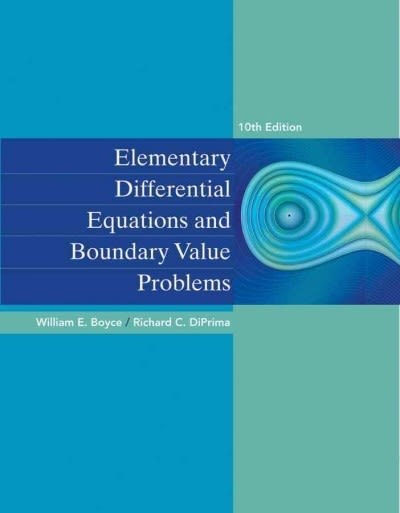Question
Practice Problems~ 1.I have 15 cookies in a cookie jar. Three of the cookies have oatmeal as an ingredient, and four have chocolate chips as
Practice Problems~
1.I have 15 cookies in a cookie jar. Three of the cookies have oatmeal as an ingredient, and four have chocolate chips as an ingredient. Two cookies have both oatmeal and chocolate chips as an ingredient. If I take out a cookie from the jar without looking, what's the probability that the cookie I take out has neither oatmeal nor chocolate chips as an ingredient?
2/3
2/15
4/15
3/5
2.We have a deck of cards. In this deck we have cards of the four different suits (clubs, diamonds, hearts and spades) with the numbers from 2 to 10 on them, for a total of 36 cards (face cards and aces have been excluded from the deck). Let A be the set of all cards with red suits (hearts and diamonds), and let B be the set of all the cards with a number smaller than 5.
What is the set (A U B)c?
All club cards with numbers 2 to 10, and all spade cards with numbers 2 to 10
All club cards with numbers 2 to 10, all spade cards with numbers 2 to 10, all heart cards with numbers 5 to 10, and all diamond cards with numbers 5 to 10
All club cards with numbers 5 to 10, and all spade cards with numbers 5 to 10
The empty set
3.We have a deck of cards. In this deck we have cards of the four different suits (clubs, diamonds, hearts and spades) with the numbers from 2 to 10 on them, for a total of 36 cards (face cards and aces have been excluded from the deck). Let A be the set of all cards with red suits (hearts and diamonds), and let B be the set of all the cards with a number smaller than 5.
Let C be defined as A ? Bc. What is the complement of set C?
The Sample Space
All club cards with numbers 2 to 10, all spade cards with numbers 2 to 10, all heart cards with numbers 2 to 4, and all diamond cards with numbers 2 to 4
All club cards with numbers 2 to 4, and all spade cards with numbers 2 to 4
All club cards with numbers 2 to 10, all spade cards with numbers 2 to 10, all heart cards with numbers 5 to 10, and all diamond cards with numbers 5 to 10
4.Alice tosses a fair coin and throws a 6-sided die. Then, Bob tosses a fair coin and throws a 6-sided die too. If the sides they got for the coin flips are the same, Alice wins. If the sides they got for the coin flips are different, then whoever got the bigger number for the die roll wins. Otherwise, it's a tie. Let C = {Head, Tail} and D = {1, 2, 3, 4, 5, 6}. What is the correct representation of the sample space for this coin-dice game?
C D C D
(C C) ? (D D)
(C ? D) (C ? D)
(C D) ? (C D)
5.Alice tosses a fair coin and throws a 6-sided die. Then, Bob tosses a fair coin and throws a 6-sided die too. If the sides they got for the coin flips are the same, Alice wins. If the sides they got for the coin flips are different, then whoever got the bigger number for their die roll wins. Otherwise, it's a tie. What is the probability of a tie?
1/2
1/12
1/3
1/6
6.


Step by Step Solution
There are 3 Steps involved in it
Step: 1

Get Instant Access to Expert-Tailored Solutions
See step-by-step solutions with expert insights and AI powered tools for academic success
Step: 2

Step: 3

Ace Your Homework with AI
Get the answers you need in no time with our AI-driven, step-by-step assistance
Get Started


